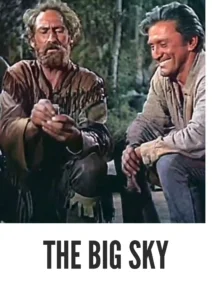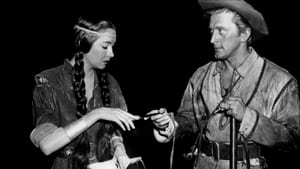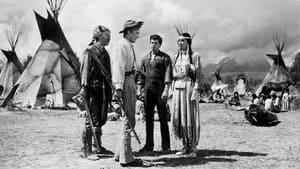Video Sources 0 Views
- Watch trailer
- The Big Sky 1952 Colorized


Synopsis
Table of Contents
Toggle
Embark on an epic adventure with The Big Sky, a sweeping Western from 1952, now vividly colorized to bring the majestic landscapes and compelling characters to life. Starring Kirk Douglas, this film delivers a powerful tale of exploration, survival, and friendship against the backdrop of the untamed American frontier. Perfect for Western aficionados and those seeking a classic cinematic journey, this HD download offers a fresh perspective on a beloved genre.
The Big Sky tells the story of Jim Deakins (Kirk Douglas) and Boone Caudill (Dewey Martin), two frontiersmen who join a dangerous expedition up the Missouri River in the 1830s. Their goal is to navigate the treacherous waters and establish a fur trading post in the heart of Blackfoot territory. Along the way, they encounter hostile Native American tribes, rival trappers, and the harsh realities of life on the frontier.
As Jim and Boone journey deeper into the wilderness, they form a strong bond of friendship and loyalty. They also meet Teal Eye (Elizabeth Threatt), a beautiful Blackfoot woman, who becomes an integral part of their lives. Together, they face numerous challenges, including brutal weather conditions, deadly conflicts, and the constant threat of starvation. The Big Sky is a visually stunning and emotionally resonant film that captures the spirit of the American West and the indomitable human will to survive.
The film features a stellar cast of actors who bring this grand adventure to life:
-
Kirk Douglas as Jim Deakins
-
Dewey Martin as Boone Caudill
-
Elizabeth Threatt as Teal Eye
-
Arthur Hunnicutt as Zeb Calloway
-
Steven Geray as Jourdonnais
The Big Sky falls into the genre of epic Western adventure, with elements of drama and historical fiction. Its sweeping landscapes, intense action sequences, and compelling character development make it a standout in the Western genre.
Released in 1952, The Big Sky reflects a fascination with the American West that was prevalent in post-war American cinema. The film was directed by Howard Hawks, a renowned filmmaker known for his versatility and mastery of different genres. The Big Sky is based on the novel of the same name by A.B. Guthrie Jr., which won the Pulitzer Prize for Fiction in 1948. The film is notable for its realistic depiction of frontier life, its stunning location photography, and its portrayal of Native American characters.
This colorized version of The Big Sky has been meticulously restored using modern digital techniques, enhancing the visual impact while preserving the film’s original grandeur and authenticity. The colorization process involved carefully analyzing the grayscale tones of the original black and white footage and assigning appropriate colors to each scene. While the specific software used remains proprietary, the techniques employed included advanced algorithms for color palette selection and image enhancement. This painstaking process brings new life to the landscapes, costumes, and characters, making the story even more immersive for modern audiences. While the decision to colorize classic films can be debated, it introduces these films to a broader audience, ensuring their legacy for future generations.
-
: Howard Hawks
-
: Dudley Nichols
-
: the novel by A.B. Guthrie Jr.
-
: Russell Harlan
-
: Christian Nyby
-
: Winchester Pictures Corporation
-
: RKO Radio Pictures
-
: 122 minutes
-
: MP4
-
: HD (1080p)
-
: Compatible with most devices, including smartphones, tablets, computers, and smart TVs.
The Big Sky (1952) is celebrated for its epic scope, its realistic portrayal of frontier life, and its strong performances. The film was nominated for two Academy Awards, for Best Cinematography and Best Supporting Actor (Arthur Hunnicutt). As a visually stunning and historically significant film, The Big Sky offers a compelling glimpse into the American West and the challenges faced by those who sought to conquer it.
The film is also known as The Big Land.
-
: What is The Big Sky about?
-
A: The Big Sky is an epic Western about two frontiersmen who join a dangerous expedition up the Missouri River.
-
-
: Is The Big Sky (1952) a well-known Western film?
-
A: The Big Sky is considered a classic of the Western genre, known for its epic scope and realistic portrayal of frontier life.
-
-
: Is this version of The Big Sky colorized?
-
A: Yes, this version has been professionally colorized to enhance the viewing experience.
-
-
: What makes The Big Sky interesting for Western fans?
-
A: The Big Sky offers a compelling glimpse into the American West, with stunning landscapes, intense action sequences, and strong performances.
-
-
: What is the download format?
-
A: The download format is MP4, which is compatible with most devices.
-
-
: What resolution is the download?
-
A: The resolution is HD (1080p), providing a high-quality viewing experience.
-
Watch The Big Sky Today!













